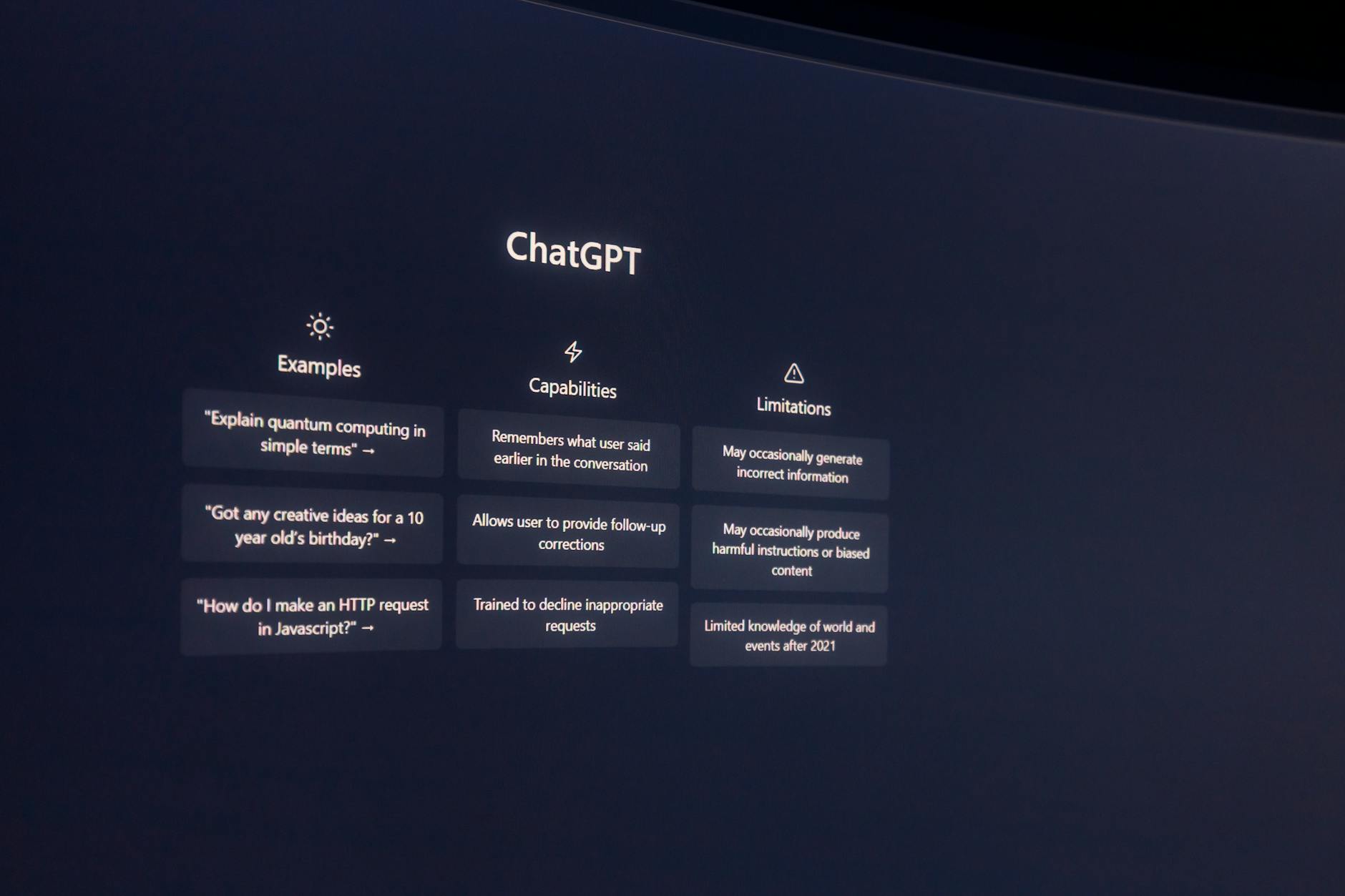Traditional law firm website tactics are failing as AI Entities now dictate who sees your content and how it’s interpreted. The shift to Zero-Click Behavior affects everyone’s organic reach and drives the growing Content Visibility Crisis. Today, trust shifts quickly in digital spaces, and law firms risk losing attention, not just traffic, when AI-Driven Decision Making pushes prospects to competitors before they even reach your site.
LLMS.txt is an emerging standard that addresses these new pressures, giving you control over how digital gatekeepers interact with your content and brand. Every day, clients bring higher expectations for a Personalized Experience and Frictionless Discovery. The pressure is real—Professional Brand Integrity and direct client acquisition depend on clear strategies for Digital Entity Optimization and Trust-Centric Design. Learn how you can adapt to protect your Law Firm Brand Voice, curb Consumer Attention Loss, and keep pace in today’s fast-changing Attention Economy. If you want practical guidance for the road ahead, you can find more on data-driven digital marketing for legal practices.
Why Law Firm Websites Face a Content Visibility Crisis in the AI Era
AI Entities now act as the new gatekeepers between law firms and potential clients, making old website tactics feel outdated. The rise of Zero-Click Behavior and AI-Driven Decision Making has shifted traffic, changed trust patterns, and left law firms facing content invisibility. If your website feels less visible or direct engagement is down, you are not alone. Multiple factors now converge, compressing the client journey and making digital trust as valuable as traffic was in the past.
Zero-Click Behavior and the Decline of Direct Engagement
Modern legal consumers get answers from search engines and AI assistants before landing on any website. AI as the First Touchpoint means clients receive quick summaries and digital snapshots of your firm without ever visiting your site.
As a result:
- You see fewer clicks, even with prominent rankings
- Direct acquisition strategies are disrupted because clients rarely reach contact forms
- Content Visibility Crisis grows, amplifying Organic Obsolescence and Consumer Attention Loss
AI Entities act as algorithmic gatekeepers, picking what information gets shown. Most of your carefully crafted practice area pages, attorney bios, and FAQ sections are now filtered or condensed into AI-generated summaries. Your Law Firm Brand Voice and Professional Brand Integrity rarely shine through in those moments.
This shift demands new strategies that speak to both humans and machines. Without action, AI essentially decides who gets the client’s first call. For a structured overview of how to rethink law firm website performance, see Legal Website Design Tips.
The Rise of AI-Driven Decision Making in Legal Services
AI-Driven Decision Making has changed how clients select their attorneys. In many practice areas, lawyers now report an increase in 'ghost' leads—people who seem interested but never follow up. This pattern often starts when prospects receive instant responses from AI chatbots, which:
- Summarize attorney qualifications based on public data
- Present condensed digital reputations
- Reallocate Digital Trust Shift to platforms or AI, not to your firm directly
You may feel the effects in subtle ways:
- Fewer people write detailed queries
- Clients second-guess information if it doesn’t match AI summaries
- Emotional Dependency on AI pushes users to trust what is summarized over what is on your site
This reduces your control over Perception vs. Reality (AI Use). What the AI says about you often shapes whether prospects ever reach out. Maintaining clear, accessible, trust-building content—structured for both humans and AI Entities—now directly affects direct acquisition.
Attention Economy and Client Journey Compression
AI-driven platforms have condensed what used to be a multi-step client journey. Where clients used to research, read reviews, and explore your site, now they jump from search to decision without much friction. This Client Journey Compression sets a new bar for Frictionless Discovery and Personalized Experience Expectation.
In a compressed attention economy, the race is not only for traffic but for digital relevance. A visitor’s trust forms instantly, often without seeing your homepage:
- AI gives crisp summaries of your credentials and reputation
- Algorithmic Gatekeeping decides what snippets of information to display
- Consumer Attention Loss accelerates, with clients abandoning sites that don’t load fast, look reputable, or answer key questions upfront
Adapting to these changes means focusing your digital assets on Trust-Centric Design. Clear branding, structured data, and consistent signals are now key. For law firms, this also means reviewing your approach to Digital Entity Optimization, making sure your site content is ready for both clients and AI Entities—both of whom now determine your relevance.
 Photo by Pavel Danilyuk
Photo by Pavel Danilyuk
What Is LLMS.txt? A Guide to the New AI Interpretation Standard
As AI Entities decide what your audience sees first, control over your law firm’s digital identity is increasingly out of your hands. The rise of Zero-Click Behavior and persistent Consumer Attention Loss mean that you must safeguard your brand’s integrity before clients or prospects even arrive at your site. LLMS.txt is a new file standard that speaks directly to how AI interprets and summarizes your web content. By setting clear boundaries and providing context, you can better protect your Law Firm Brand Voice and reduce misinterpretations at scale. This standard also responds to today's demands for Frictionless Discovery, supporting consistent, professional representation across all digital channels.
 Photo by Matheus Bertelli
Photo by Matheus Bertelli
How LLMS.txt Shapes Perception vs. Reality in the Age of AI Entities
LLMS.txt puts you back in control of the Perception vs. Reality (AI Use) struggle. Without guidance, AI Entities often make surface-level assessments, piecing together your story from available data. This can lead to mismatches between your intended message and what is summarized by digital gatekeepers. LLMS.txt acts as a translator, giving clear instructions on how to interpret critical pages and statements.
Consider these benefits:
- Minimizes Digital Trust Shift by locking in your firm’s core narrative before third-party summaries distort your intent
- Reduces misquotes on qualifications, values, and service scope which often happen with algorithmic condensation
- Supports your Direct Acquisition Strategies by making sure AI as the First Touchpoint doesn’t misrepresent your expertise or results
LLMS.txt functions as a signpost. Instead of letting AI-Driven Decision Making compress your firm’s achievements into shallow snippets, you tell the algorithms how to prioritize, filter, and summarize your work. This protects your Professional Brand Integrity and strengthens digital trust through every new client interaction, even when visitors never reach your physical website.
Personalized Experience Expectation and Professional Brand Integrity Online
Clients expect authentic, personalized digital interactions. Poor AI summaries break that trust and can drive Consumer Attention Loss. LLMS.txt allows you to present your firm’s tone, expertise, and service focus as the reference standard for these first encounters.
With clear and structured LLMS.txt guidance:
- Your Law Firm Brand Voice remains consistent, even in automated, zero-click exchanges
- Your content is mapped to client intent, supporting Frictionless Discovery and reducing Organic Obsolescence
- Each aspect of the client journey, from quick AI answers to detailed page insights, is aligned for clarity and confidence
This helps counteract Emotional Dependency on AI, keeping your firm’s unique character visible and relatable in the compressed Attention Economy. By supplying explicit interpretation rules, you create a digital foundation for Trust-Centric Design. The result is a transparent, reliable, and repeatable method for Digital Entity Optimization—one that benefits your team and bolsters future engagement.
For related insights on aligning digital assets with your client journey and maintaining professional integrity, see the guide to conversion optimization for legal websites.
Implementing LLMS.txt: Step-by-Step for Attorneys and Service Firms
Rolling out LLMS.txt for your practice requires not just technical input, but a systematic approach tailored to how AI Entities parse, value, and present your services. The right structure ensures your content stands out in Zero-Click Behavior environments, maintains digital trust, and reduces the risk of Organic Obsolescence as AI-driven decision making pressures old methods. Here’s how to drive effective adoption for better content visibility and reliable client acquisition.
Frictionless Discovery: Making Your Content Instantly Accessible to AI
 Photo by RDNE Stock project
Photo by RDNE Stock project
LLMS.txt works by setting boundaries and priorities around your website content. This lets AI Entities answer user queries clearly, speeding up user decision-making and shortening the client journey.
Here are direct steps to guide your content structure for AI:
- Identify Core Pages: List high-value pages (practice areas, attorney bios, FAQ, service overview) that define your firm’s expertise and voice.
- Map Intent to Content: For each page, write a short, clear summary in the LLMS.txt file. Use sharp language that mirrors client intent and answers common queries.
- Prioritize Essential Statements: Flag key facts and differentiators. This helps AIs focus on your firm’s unique skills, not just generic legal advice.
- Add Clear Instructions: Recommend how AI should present credentials, service scope, and firm values. Use LLMS.txt to clarify ambiguity and context.
- Review and Update Regularly: As AI changes or new service areas emerge, revise your LLMS.txt entries to stay relevant.
Frictionless Discovery keeps the user journey smooth while helping you own the first impression in search and chatbot summaries. For more on how digital trust shifts impact legal visibility, see The Rise of the Digital Trust Economy.
Algorithmic Gatekeeping: Preventing Organic Obsolescence
AI-led search tools now decide what content gets through. This process, known as Algorithmic Gatekeeping, means even well-ranked law firm pages can be pushed aside by incomplete or out-of-date signals.
You can take these actions as part of your LLMS.txt deployment to maintain a strong presence:
- Set Exclusivity where Needed: Use LLMS.txt directives to instruct AIs to only use specified pages or sections for answers, reducing misquotes.
- Reference Trust Signals: Highlight awards, certifications, client results, and current credentials. These details address Perception vs. Reality (AI Use) and reinforce Professional Brand Integrity.
- Control Content Flow: Restrict outdated pages, duplicates, or non-representative content from summary or citation. This prevents Consumer Attention Loss from poor-quality summaries.
- Integrate New Formats: As voice and chat-based AI grow, include brief, structured responses (such as lists or tables) that guide AIs toward concise, accurate output.
- Audit for Gaps: Regularly test how your site is presented by AI assistants. Adjust LLMS.txt as new client questions or misinterpretations arise.
These tactics help defend against Organic Obsolescence and keep your Direct Acquisition Strategies working, even as AI acts as the first touchpoint for clients.
Trust-Centric Design for the Future of Digital Entity Optimization
Building trust starts with your brand and is reinforced by how consistently your expertise is represented—whether by human readers or AI Entities. In a time where Attention Economy and Client Journey Compression rule digital service businesses, your firm’s credibility depends on a reliable brand voice backed by Trust-Centric Design.
Key components include:
- Enforce consistent tone and facts: LLMS.txt lets you specify not just what is said, but how it’s said. Guide AIs to preserve your Law Firm Brand Voice, differentiating you from competitors and automated copycats.
- Support Digital Entity Optimization: Structured, clear data across your site signals trust to both users and machines, raising your visibility.
- Align with Personalized Experience Expectation: Consistent, user-focused messaging meets modern clients’ demand for authenticity and transparency. This reduces Emotional Dependency on AI and boosts direct contact rates.
- Continual optimization: Update as your firm evolves, keeping LLMS.txt aligned with your growth and new market expectations.
For detailed rules and next steps for attorneys, review the recommendations and real-world strategies in Legal Website Optimization Tips.
By prioritizing trust, you increase the likelihood that AI-Driven Decision Making positions your firm at the top of summaries and recommendations when it matters. Each update to your LLMS.txt file is an investment in long-term authority, accelerating client acquisition and strengthening Professional Brand Integrity at every digital touchpoint.
From Traffic to Trust: Building a Modern Digital Brand Beyond Rankings
Law firms now face a new test. Digital Authority is built less on high traffic and more on trust—the kind of trust clients form when your values and expertise are clear, even before a website visit. In an era shaped by AI Entities, Zero-Click Behavior, and Digital Trust Shift, a strong brand voice is the foundation for lasting relationships. The rise of LLMS.txt gives you a new toolkit to shape how others perceive your practice, cut through the Content Visibility Crisis, and reduce the gap between Perception vs. Reality (AI Use) in legal services.
Law Firm Brand Voice and Direct Acquisition Strategies: Show how LLMS.txt empowers law firms to demonstrate their value and values—leading to stronger relationships and less dependence on third-party gatekeepers.
 Photo by Mustafa ezz
Photo by Mustafa ezz
AI-Driven Decision Making has put pressure on law firms to clarify and control their story. Traditional digital marketing once focused on raising rankings, but in the current Attention Economy, your Law Firm Brand Voice and direct acquisition methods require precision and protection.
LLMS.txt allows you to present your value and core beliefs up front, strengthening trust with both AI as the First Touchpoint and your eventual clients. Here’s how you benefit:
- Narrative Control: LLMS.txt gives clear instructions to AI Entities about your expertise, ethics, and approach. You set the tone, not third-party platforms.
- Consistent Representation: Your service areas and values remain unmistakable, reducing risk of Digital Trust Shift when prospects rely on summaries from search engines or chatbots.
- Direct Client Path: By addressing Frictionless Discovery and aligning with Personalized Experience Expectation, you shorten the client journey and build stronger relationships. Visitors reach you more prepared and confident, leading to improved Direct Acquisition Strategies.
Over time, these steps cut your reliance on external gatekeepers who may compress or misinterpret your firm’s reputation. You regain authority as your own trusted digital brand, reducing Organic Obsolescence and keeping your Professional Brand Integrity at the center.
For a practical guide on applying these concepts to law firm growth, review Digital strategies for legal professionals.
The Attention Economy: Managing Consumer Attention Loss and Emotional Dependency on AI
Today, every law firm must respond to compressed client journeys and the risks of Consumer Attention Loss. Prospects often form opinions from split-second AI summaries, making it harder to hold attention and connect emotionally. Over-reliance on AI also creates Emotional Dependency on AI, where trust forms with technology instead of your practice.
Managing this starts by adapting to Client Journey Compression and Algorithmic Gatekeeping:
- Clear, Structured Communication: Use LLMS.txt to specify which content and values should surface first. This ensures quick, accurate matches to client needs and reduces misinterpretation.
- Frequent Updates: Refresh your LLMS.txt entries as your firm evolves. This avoids outdated impressions and prevents Organic Obsolescence that damages trust.
- Strengthen Digital Entity Optimization: Keep your messaging uniform and address pain points directly. Support your reputation with trust signals (testimonials, awards, or case examples) to uphold Professional Brand Integrity.
- Encourage Direct Contact: Guide users toward pathways that prioritize real conversations and personal connection over passive interactions.
To further support your approach, review Improving Legal Website Conversion Rates. It covers strategies that help you adapt to trends in the Attention Economy and focus on Trust-Centric Design.
In this environment, strong human-centered brand signals win. LLMS.txt is not just a technical fix, but a way to build relevance and reliability—qualities clients remember when it’s time to hire legal help.
Conclusion
Taking control with LLMS.txt sets a clear standard for how AI Entities interpret your law firm’s content, protecting you from the risks of Zero-Click Behavior and the ongoing Digital Trust Shift. By bridging the gap between Perception vs. Reality (AI Use) and supporting your Law Firm Brand Voice, you maintain Professional Brand Integrity and reduce Consumer Attention Loss. LLMS.txt is not just about preventing misquotes or summary errors—it is about building ongoing trust, meeting Personalized Experience Expectations, and adapting to Client Journey Compression in a fast-changing Attention Economy.
Immediate action benefits your Direct Acquisition Strategies and keeps your digital reputation strong. Audit your website now. Assess your readiness for Algorithmic Gatekeeping, and review how your digital assets align with Frictionless Discovery and Digital Entity Optimization. For more practical examples on creating trust-centered digital experiences, explore User-Friendly Legal Websites That Build Trust in 2025. Your next step is to lead this shift—prioritize clarity, adapt with confidence, and set your brand apart as digital authority standards evolve.














.webp)